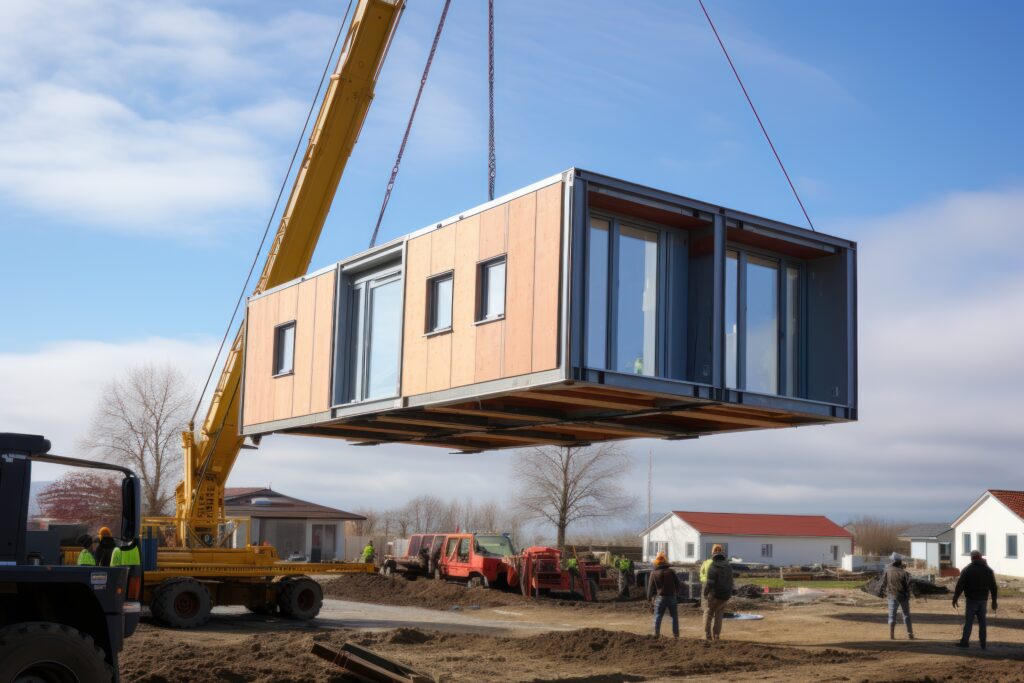This is part of our Special Report on Real Estate in Canada and around the world. To see all the articles so far, click here.
Canada’s condo market has entered its most severe downturn in more than three decades, with Toronto leading a historic collapse that extends far beyond typical market corrections. In the Greater Toronto and Hamilton Area alone, new condo sales plummeted 64 per cent, to just 4,590 units, in 2024—the lowest volume since 1996. With over 24,000 unsold units across all development stages, and inventory levels reaching 58 months of supply, the market faces unprecedented challenges.

Yet within this crisis lies extraordinary opportunity. Canadian family offices—with their patient capital, operational flexibility and multigenerational investment perspective—are uniquely positioned to acquire premium assets at practically once-in-a-lifetime discounts, reshape urban housing delivery, and emerge as leaders in Canada’s inevitable real estate renewal.
The anatomy of collapse: Understanding the reset in the condo market
The roots of today’s crisis trace back to the post-2008 super-cycle, when ultra-low interest rates and robust immigration fuelled unprecedented speculation. By 2021, overseas investors comprised up to 70 per cent of buyers in certain pre-construction projects, while domestic speculators flipped assignment contracts like commodities. A 471-square-foot downtown studio purchased for $722,000 epitomized a market completely detached from fundamentals.
The COVID-19 pandemic initially accelerated these trends. Emergency monetary stimulus flooded markets with liquidity, remote work shifted preferences, and speculative fever reached new heights. But the seeds of correction were planted in this euphoria.
The reset arrived with stunning speed. The Bank of Canada’s historic rate-hiking cycle—from 0.25 per cent to five per cent in just 16 months—combined with new foreign buyer taxes to create an immediate demand shock. Today, that same $722,000 studio trades at discounts exceeding 30 per cent, with desperate owners willing to accept substantial losses rather than close at original prices.
Market fundamentals: The depth of distress in the condo market
Current market metrics reveal the severity of today’s correction:
Sales activity: Toronto condo sales fell 69 per cent year-over-year in Q2 2025 to just 502 units—91 per cent below the decade average. New construction sales hit 28-year lows, with only 10 per cent of newly launched units selling in Q4 2024.
Inventory surge: Unsold inventory reached 24,045 units across all development stages, with completed developer-held units showing 60 months of supply. Active listings nearly doubled, from 6,300 to 12,000 units, throughout 2024.
Price pressure: Average selling prices declined 5.9 per cent year-over-year, to $685,961, in Q2 2025, while new construction pricing fell 16 per cent from recent peaks to $1,212 per square foot. Assignment sales frequently trade 30 to 40 per cent below original purchase prices.
Construction collapse: Housing starts plummeted 60 per cent in the first half of 2025, falling to levels not seen since 2009 on an absolute basis and 1996 on a population-adjusted basis. Only 1,276 units began construction in Q2 2025—an 84 per cent decline from two years prior.
Developer distress: A total of 21 projects representing 4,412 units have been cancelled since 2024, with receivership appointments reaching their highest level in roughly a decade. High-profile failures include Mizrahi Developments’ The One tower in Toronto, with $1.6 billion in total project debt.
However, this very distress creates the foundation for future opportunity. As one interviewee for the upcoming PwC’s Emerging Trends in Real Estate 2026 noted, “What feels like maximum pessimism today will translate into inevitable supply shortages and new growth tomorrow.”
10 strategic condo plays for Canadian family offices
While institutional investors remain cautious, family offices can leverage their unique advantages—patient capital, operational agility and long-term perspective—to unlock exceptional value through targeted strategies.
1. Acquire distressed assets and developer inventory at deep discounts.
The surge in project cancellations, defaults and receiverships has created unprecedented bulk acquisition opportunities. Premium sites, incomplete towers and unsold inventory are available at 20 to 40 per cent discounts to peak valuations. Rather than purchasing individual units, sophisticated buyers are negotiating directly with developers for entire floors or building sections.
One Toronto-based fund is actively pursuing bulk acquisitions, targeting net returns of 18 per cent or more over a two-to-five-year horizon, capitalizing on the disconnect between current appraisals and pre-construction contract prices. With over 31,000 condo units scheduled for completion in 2025 alone, the opportunity for strategic bulk purchases continues expanding.
2. Capitalize on “toxic” assets: contaminated land and brownfield sites.
Environmental stigma creates significant value opportunities for sophisticated investors. Brownfield sites across urban cores often trade at discounts far exceeding actual remediation costs. The City of Langley, B.C., generated $192.2 million in brownfield redevelopment value, demonstrating the sector’s potential.
A recent Vancouver example: a former gas station downtown traded for $8 million due to soil contamination, but after $400,000 in remediation, the site was valued at $12 million for residential development—a 50 per cent value creation opportunity requiring environmental expertise rather than massive capital deployment.
3. Exploit title defect and legal complexity opportunities.
Properties with clouded titles—unreleased mortgages, missing heir signatures, or boundary disputes—represent opportunities requiring legal sophistication rather than substantial capital. A $2.2 million Yorkville condo might trade for $1.4 million due to an unresolved 1998 renovation lien. A Vancouver waterfront unit with incomplete inheritance paperwork might offer a $300,000 discount.
Most investors lack the legal expertise to distinguish between easily resolved administrative issues and genuinely problematic ownership disputes, creating sustainable competitive advantages for sophisticated buyers with proper legal resources.
4. Target special assessment arbitrage plays.
Aging condo infrastructure has created a category of distressed sales: buildings facing major special assessments. In one case, an Ottawa highrise’s $900,000 envelope repair announcement prompted discounted listing waves. In another, a Calgary family office acquired three units at $35,000 discounts each, paid the assessments, and now holds newly renovated units in a building commanding premium pricing.
Focus on buildings where assessments add real value. Those with strong reserves, professional management and clear engineering reports offer the best risk-adjusted returns while transforming building fundamentals.
5. Provide private credit and alternative lending solutions.
As traditional lenders retreat, developers desperately need alternative financing. Family offices can deploy capital via first mortgages, mezzanine debt or bridge loans—often on “originate-to-own” terms allowing equity conversion if necessary.
A Toronto tower recently required $10 million in mezzanine financing at 12 per cent interest plus a 20 per cent equity kicker. If the project succeeds, the family office earns attractive yield plus upside; if not, they can control a prime site at below replacement cost. Current market conditions support 10 to 15 per cent yields on senior debt and 15 to 20 per cent on mezzanine financing.
6. Acquire or resolve strata governance nightmares.
Dysfunctional strata corporations often trade at significant discounts. A Vancouver tower with a $2 million parkade repair dispute saw units trading at 10 to 15 per cent discounts. A family office acquired 15 units, took strata control, resolved the issues, and achieved values at market premiums.
Transform dysfunctional buildings through operational excellence, often achieving 15 and 25 per cent valuation uplifts simply by implementing professional management and resolving deferred maintenance—operational value creation rather than market timing.
7. Develop purpose-built rental and alternative housing models
Family offices can pivot stalled condo sites for rental development, accessing Canada Mortgage and Housing Corp.-insured mortgages and government incentives. In Mississauga, Ont., a stalled 180-unit condo project successfully converted to purpose-built rental, leveraging favorable CMHC financing and new tax advantages.
Policy support, demographic demand and construction cost advantages create ideal conditions for rental conversions. Purpose-built rental, student housing and seniors’ residences offer inflation-linked returns and recession-resilient demand patterns.
8. Strategic land assembly and banking for future development
The current market disruption creates exceptional opportunities for patient capital to acquire and assemble strategic development sites at historically attractive pricing. With land values declining alongside the broader market correction, family offices can aggregate adjacent properties in prime locations, creating larger development parcels positioned for the inevitable recovery.
Land assembly opportunities are particularly compelling in transit-oriented locations where current owners face financial distress but future development potential remains strong. A Vancouver-based family office recently assembled four adjacent properties in a downtown corridor for 35 per cent below 2022 valuations, creating a consolidated site suitable for future high-density development.
The strategy works on multiple levels: current distress creates acquisition opportunities, patient capital allows for optimal timing of development, and longer holding periods enable family offices to capitalize on both land appreciation and development profits when market conditions improve. Unlike operating real estate, raw land requires minimal ongoing management while providing maximum flexibility for future use optimization.
9. Form strategic partnerships and recapitalize developers
Collaboration unlocks scale, shared risk and access to complex deals beyond individual family office capabilities. Three Toronto-area family offices recently recapitalized a mid-market developer, securing fee income, profit participation and pipeline access to future projects.
A Vancouver family office acquired a 60 per cent stake in a boutique developer, gaining land inventory, development expertise and preferential access to future opportunities. These partnerships provide operational knowledge while accessing deals too large or complex for individual investors.
10. Invest in prefab and modular housing platforms

Advanced construction technology offers sustainable competitive advantages as the industry modernizes. A Toronto family office partnered with a modular construction firm to develop midrise rentals, reducing construction timelines by 40 per cent while maintaining cost predictability.
The federal government’s $25 billion Build Canada Homes initiative specifically targets prefabricated and modular construction, offering up to 50 per cent time savings, 20 per cent cost reductions, and 22 per cent emission improvements compared to traditional methods. Family offices investing in these platforms gain operational advantages while positioning for significant government program participation.
Timing the recovery: market indicators and investment framework
Smart capital positions for recovery rather than simply buying during downturns. Three key indicators will signal market restoration:
Supply normalization: Construction starts must return to historical averages while inventory falls below six months of supply. Current data suggests this is unlikely before late 2026, providing extended acquisition windows for patient capital.
Demand recovery: While immigration targets have been reduced, underlying demographic drivers remain strong. Population growth and household formation will eventually drive demand renewal, particularly as affordability improves with declining prices.
Financial conditions: Interest rate normalization and confidence restoration will unleash pent-up demand. The Bank of Canada’s recent cuts to 2.5 per cent represent the beginning of monetary accommodation that should gradually improve market sentiment and affordability.
Shaping Canada’s next real estate cycle
The current freeze represents far more than a cyclical correction—it’s a fundamental reset creating generational wealth transfer opportunities. The exodus of speculative capital, return to fundamental valuations and focus on operational excellence will reward patient, professional investors who act decisively while others retreat.
As spring inevitably follows winter, Canada’s real estate renewal is not a matter of if, but when—and family offices positioned at the forefront will capture disproportionate value from the recovery.
Fred Cassano is Partner, National Real Estate Leader, for PwC Canada. Fred’s clients include public and private real estate landlords, developers, construction and engineering companies, hotel managers and owners, retailers, and high-net-worth individuals and family offices. He is on the Canadian editorial team for Emerging Trends in Real Estate, a thought leadership report that PwC publishes annually with Urban Land Institute. Fred is a Chartered Accountant and a graduate of York University’s Schulich School of Business.
The Canadian Family Offices newsletter comes out on Sundays and Wednesdays. If you are interested in stories about Canadian enterprising families, family offices and the professionals who work with them, but like your content aggregated, you can sign up for our free newsletter here.
Please visit here to see information about our standards of journalistic excellence.

